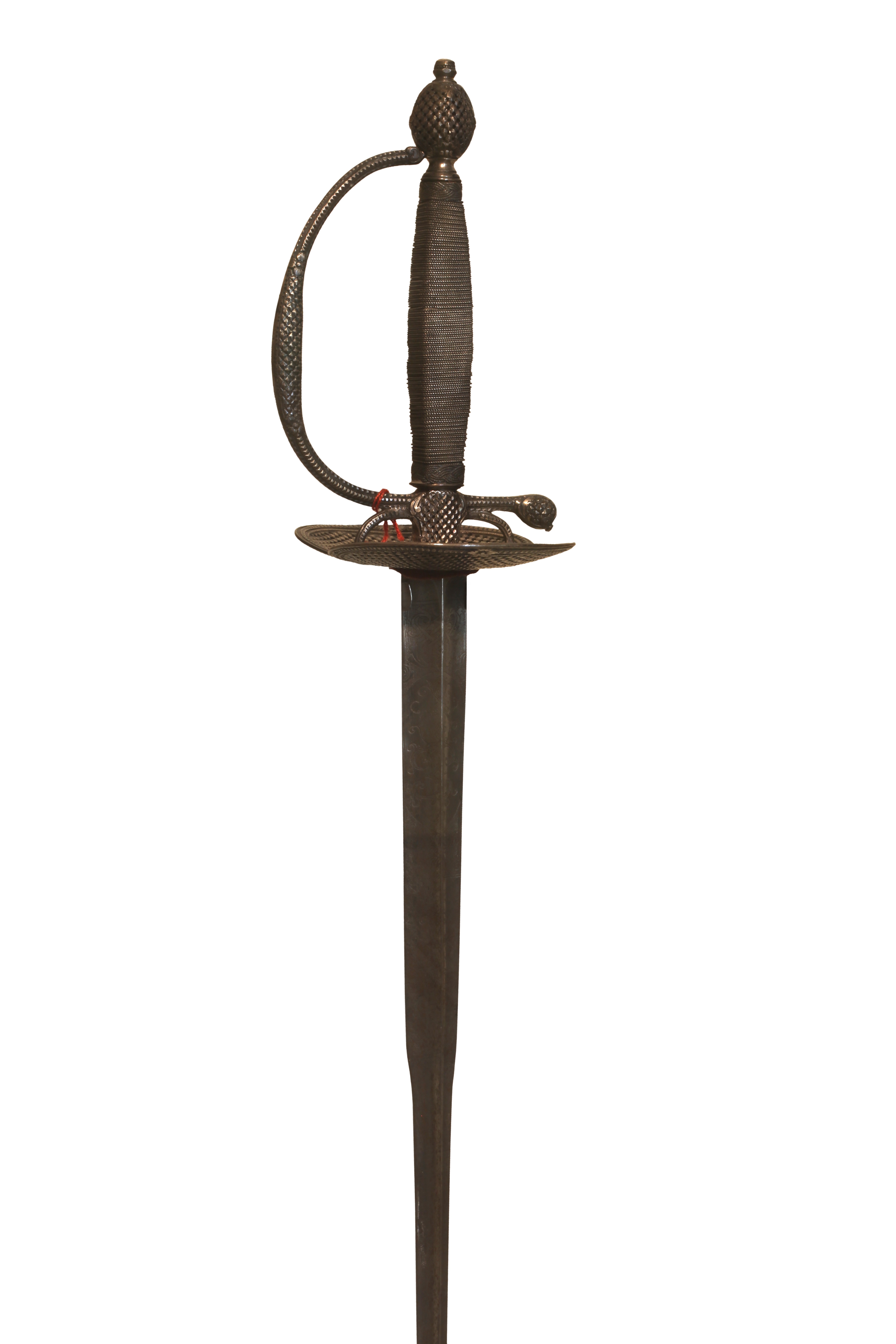Colichemarde IMG 5567 on:
[Wikipedia]
[Google]
[Amazon]
 Colichemarde is a type of
Colichemarde is a type of
 The colichemarde blade configuration is sometimes credited to one Graf von Königsmark (perhaps Otto Wilhelm Königsmarck), owing to the two names' similarity in pronunciation. The colichemarde first appeared about 1680 and was popular during the next 40 years at the royal European courts. It was especially popular with the officers of the French and Indian War period.
The colichemarde blade configuration is sometimes credited to one Graf von Königsmark (perhaps Otto Wilhelm Königsmarck), owing to the two names' similarity in pronunciation. The colichemarde first appeared about 1680 and was popular during the next 40 years at the royal European courts. It was especially popular with the officers of the French and Indian War period.
 Colichemarde is a type of
Colichemarde is a type of small sword
The small sword or smallsword (also court sword, Gaelic: or claybeg, French: or dress sword) is a light one-handed sword designed for thrusting which evolved out of the longer and heavier rapier of the late Renaissance. The height of the small ...
(often written "smallsword") blade that was popular from the late 17th century to the middle 18th century.
Overview
The small sword is considered to be a descendant of the "transitional rapier", which itself evolved from the rapier due to the demand for a lighter sword, easier to wear. The shape of a colichemarde blade features a wide forte, which abruptly tapers to a much narrower form at a point varying between a fifth to a third of the blade length from the hilt. The blade cross section was most often triangular and hollow-ground. This configuration combines goodparrying
A parry is a fencing bladework maneuver intended to deflect or block an incoming attack.
Execution
To execute a parry, fencers strike the opponent's foible, or the area near the tip of the blade, with their forte, or the part of the blade nea ...
characteristics, due to the wide blade forte, with the good maneuverability and thrusting characteristics imparted by the narrow blade foible. Its lighter weight, shorter length and superior balance, compared to the rapier, allowed faster and more accurate movement of the blade. This enabled the fencer to achieve a more precisely targeted thrust on an adversary.
The point where the blade of a sword joins the tang was a recognized weak point. The tang was often made of malleable iron
Malleable iron is cast as white iron, the structure being a metastable carbide in a pearlitic matrix. Through an annealing heat treatment, the brittle structure as first cast is transformed into the malleable form. Carbon agglomerates into small ...
and forge-welded to the steel of the blade. A wider blade at this point of transition, such as is seen in the colichemarde, may have been viewed as offering a stronger union.
Brief history
 The colichemarde blade configuration is sometimes credited to one Graf von Königsmark (perhaps Otto Wilhelm Königsmarck), owing to the two names' similarity in pronunciation. The colichemarde first appeared about 1680 and was popular during the next 40 years at the royal European courts. It was especially popular with the officers of the French and Indian War period.
The colichemarde blade configuration is sometimes credited to one Graf von Königsmark (perhaps Otto Wilhelm Königsmarck), owing to the two names' similarity in pronunciation. The colichemarde first appeared about 1680 and was popular during the next 40 years at the royal European courts. It was especially popular with the officers of the French and Indian War period. George Washington
George Washington (February 22, 1732, 1799) was an American military officer, statesman, and Founding Father who served as the first president of the United States from 1789 to 1797. Appointed by the Continental Congress as commander of th ...
was presented with one during his inauguration. The widespread misapprehension that the colichemarde quickly ceased to be produced after 1720 dates to the opinion given by Sir Richard Burton
Sir Richard Francis Burton (; 19 March 1821 – 20 October 1890) was a British explorer, writer, orientalist scholar,and soldier. He was famed for his travels and explorations in Asia, Africa, and the Americas, as well as his extraordinary kn ...
in his ''Book of the Sword'' (1884). However, many securely dated colichemarde swords from as late as the 1770s can be found in collections.
This sword appeared at about the same time as the foil. However the foil was created for practicing fencing at court, while the colichemarde was created for dueling. It made frequent appearances in the duels of New Orleans.
See also
*Sabre (fencing)
The sabre (US English: ''saber'', both pronounced ) is one of the three disciplines of modern fencing. The sabre weapon is for thrusting and cutting with both the cutting edge and the back of the blade (unlike other modern fencing weapons, the Ă ...
* Duel
A duel is an arranged engagement in combat between two people, with matched weapons, in accordance with agreed-upon Code duello, rules.
During the 17th and 18th centuries (and earlier), duels were mostly single combats fought with swords (the r ...
* Rapier
* Small sword
The small sword or smallsword (also court sword, Gaelic: or claybeg, French: or dress sword) is a light one-handed sword designed for thrusting which evolved out of the longer and heavier rapier of the late Renaissance. The height of the small ...
* Flame-bladed sword
A flame-bladed sword or wave-bladed sword has a characteristically undulating style of blade. The wave in the blade is often considered to contribute a flame-like quality to the appearance of a sword. The dents on the blade can appear parallel o ...
* Spada da lato
Notes
{{reflist Fencing Early Modern European swords